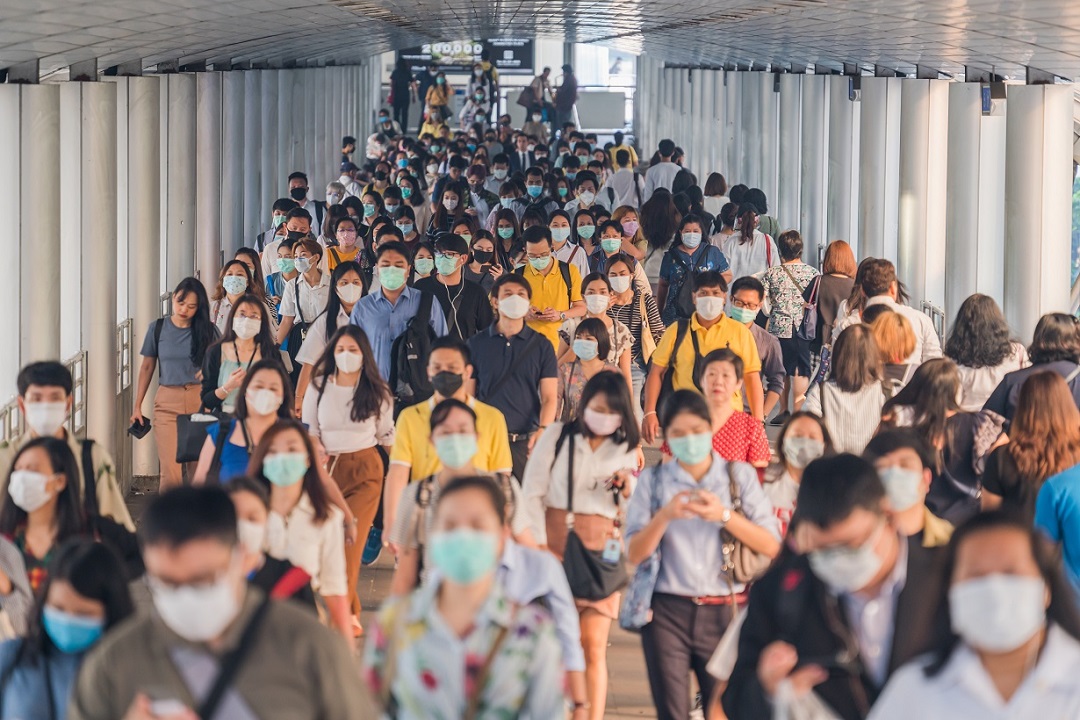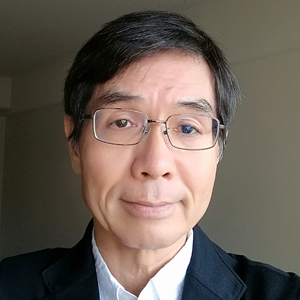
Game theory can provide insights into how people may be motivated to behave in ways that are most beneficial for society, but there is no mechanism, laments Tatsuyoshi Saijo, that can help reduce the spread of coronavirus infections.
* * *
The COVID-19 state of emergency that was declared in seven Japanese prefectures on April 7 (extended nationwide on April 16) and fully lifted on May 25 consisted largely of voluntary measures, unlike the strictly enforced lockdowns of other countries.
The stay-at-home request thus presented many people in Japan with a choice not unlike what game theorists call the hawk-dove game—more popularly known as “chicken.”[1] In this game, you have a choice of either staying safely at home (dove) or going out at the risk of becoming infected (hawk). If you go out and your “opponent” chooses self-isolation, you get to enjoy the outing. This, in the table below, is assigned a value of 10, the highest score.
Your opponent not only misses out on the fun but could become infected if, say, you happen to carry the virus home with you, so this strategy yields a low score of 2. If both of you go out, then the chances of becoming infected rise, resulting in a score of zero; conversely, if you both play it safe and stay home, you each get a score of 8.
Given these conditions, the choice that players are most likely to make—technically called the Nash equilibrium—is to leave the house if your opponent remains in isolation and to stay in place if your opponent ventures out. Your opponent will behave in the same way; the equilibria, then are the areas shaded gray in the table below. Neither both of you staying at home nor leaving the house corresponds to the Nash equilibrium.
The Coronavirus Hawk-Dove Game

This scenario is based on evolutionary game theory, as proposed by John Maynard Smith, in which you adopt a dove strategy if your opponent chooses to act the hawk, and vice versa.[2] Because there is no telling which strategy your opponent will take, you are likely to look at probabilities—estimating how many times out of 10, for instance, that your opponent will choose to stay at home. In the example above, the optimum strategy would be for both players stay at home 50% of the time—referred to in game theory as an evolutionarily stable strategy. The two quadrants of the Nash equilibrium, in this case, do not represent such a strategy.
The prisoner’s dilemma, meanwhile, is a game that can be designed so that players are motivated to make choices that lead to better collective results.[3] Unfortunately, such a mechanism for the coronavirus pandemic—where all players can be motivated to stay at home—is not attainable.[4] This is probably why many countries have needed to enforce lockdowns to prevent people from venturing out. In Japan, the measures have been voluntary due to legal restraints; even under a state of emergency, people have merely been asked to exercise self-restraint and reduce outings by 80%.
Using data for credit card use at restaurants and entertainment facilities, Associate Professor Takayuki Mizuno of the National Institute of Informatics and his colleagues have been analyzing people’s conduct during the stay-at-home advisory.[5] They have found that more people have been staying at home since March, but the rate is far short of the 80% target set by the government. They have also noticed considerable disparities according to region and age.
Another study by Professor Lei Zhang of the University of Maryland used cell phone data to calculate stay-at-home rates and develop a social distancing index for different parts of the United States.[6] The index for Maryland on April 25, when the stay-at-order was in place was 60; on May 8, shortly before it was lifted, it had dropped to 47, suggesting that residents had developed stay-at-home fatigue.
In early April, the Kochi University of Technology, where I teach, shifted to remote learning and instructed students to leave the dormitory. In May, I conducted an online survey of around 150 first-year students and found that the advisory was largely being ignored by 1 in 10 students, whose stay-at-home rate was around 20%. But the rest of my students had a very high rate of over 80%, resulting in an average of around 80%.
About a month has passed since we switched to distance learning, and I have found that things might be better this way. The transfer of knowledge, the submission and grading of homework, and support for individual students have been very smooth and efficient. A university education consists of much more than just the transmission of knowledge, of course, but recent developments suggest that the educational experience may soon undergo a radical transformation.
I would like to acknowledge the valuable comments I received from Ryuta Aoki of Tokyo Metropolitan University and Yutaka Kobayashi of the Kochi University of Technology in preparing this paper.
[1] Significant advances have been made in recent years regarding the insights game theory can shed on the dynamics of infectious diseases, but here I have applied the most basic model in highlighting people’s choices during the current pandemic. See Sheryl L. Chang, et al., “Game Theoretic Modelling of Infectious Disease Dynamics and Intervention Methods: A Review,” Journal of Biological Dynamics 14.1 (2020): 57–89, https://doi.org/10.1080/17513758.2020.1720322.
[2] John Maynard Smith, Evolution and the Theory of Games, Cambridge University Press, 1982.
[3] Tatsuyoshi Saijo, Takehito Masuda, and Takafumi Yamakawa, “Approval Mechanism to Solve Prisoner’s Dilemma,” Social Choice and Welfare 51 (2018): 65–77.
[4] Tatsuyoshi Saijo and TakehikoYamato, “A Voluntary Participation Game with a Non-Excludable Public Good,” Journal of Economic Theory 84 (1999): 227–242.
[5] Takayuki Mizuno, Takaaki Onishi, and Tsutomu Watanabe, “Ryudojinko biggu deta ni yoru chiiki jumin no jishukuritsu no mieruka” (Visualization of Local Residents’ Self-Isolation Rate Using Big Data), Canon Institute for Global Studies, April 22, 2020, https://www.canon-igs.org/column/macroeconomics/20200422_6369.html.

